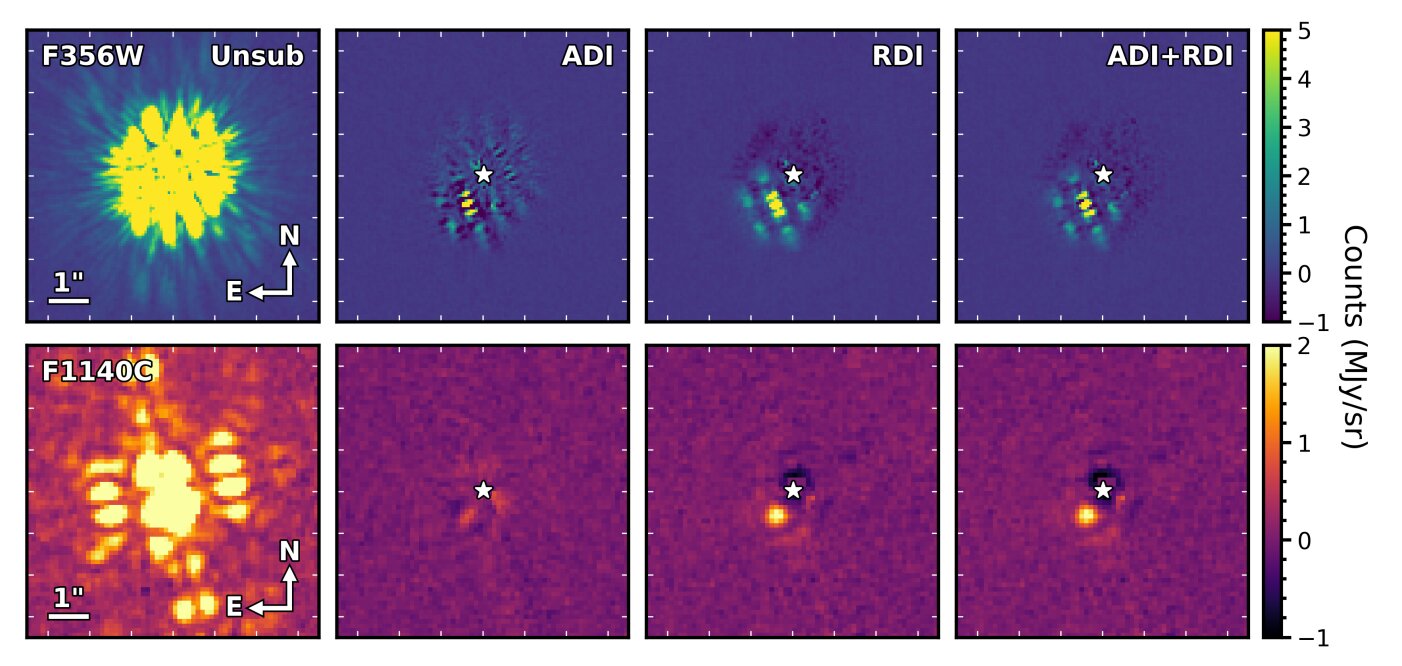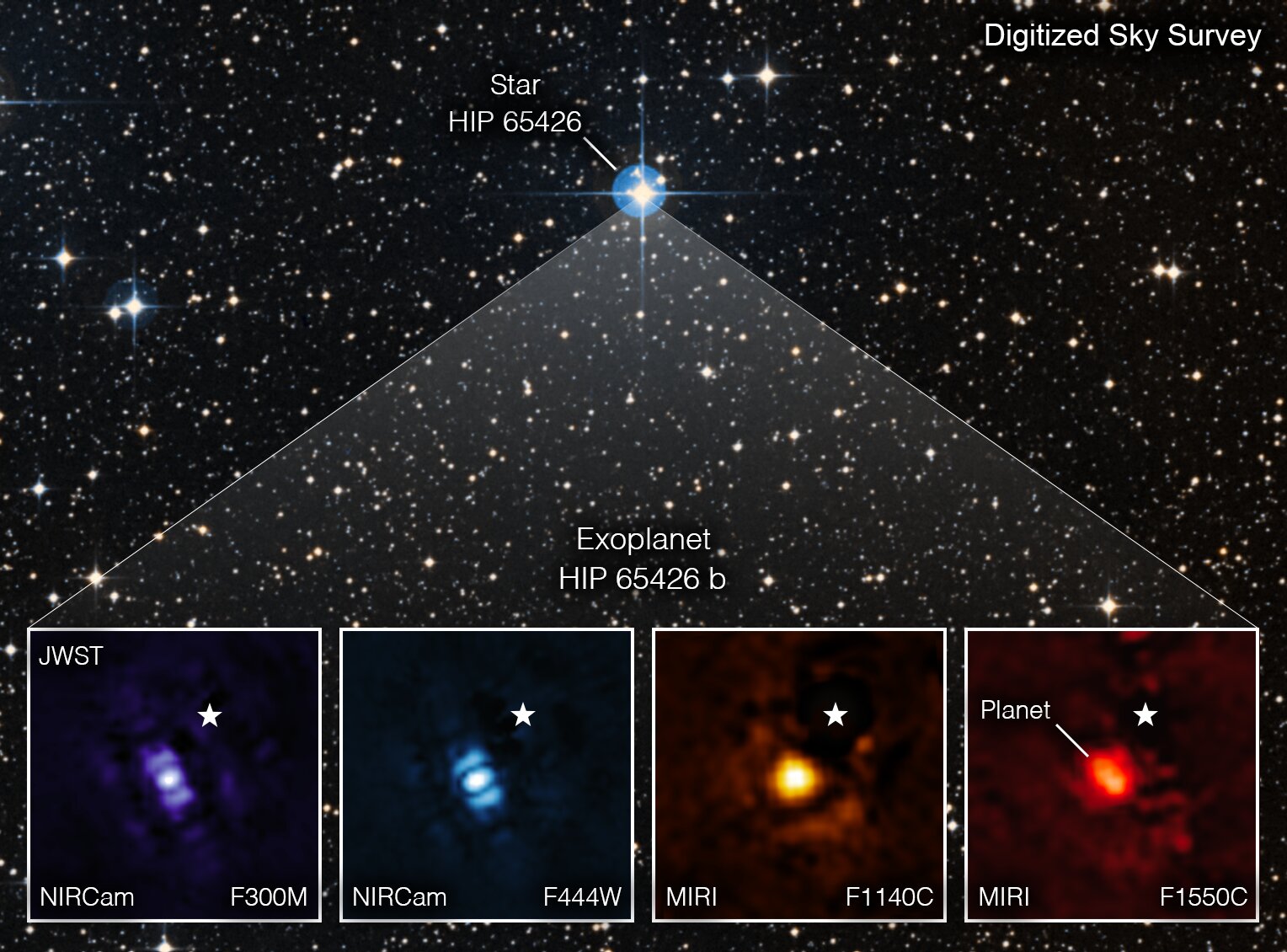University of Exeter astronomers spearheaded the effort to take the first-ever direct photograph of an exoplanet using the ground-breaking James Webb Space Telescope. The incredible image depicts HIP65426b, a gas giant around five to ten times the mass of Jupiter that formed 15-20 million years ago. Professor Sasha Hinkley of the University of Exeter led the observations, which were carried out in partnership with an international team of academics.
According to Professor Hinkley, this is a watershed moment not only for Webb but also for astronomy in general. With Webb, we can look at the chemistry of these planets using a whole new set of physics.
The planet was found in 2017 by astronomers using the SPHERE instrument on the European Southern Observatory's Very Large Telescope in Chile. These priceless photographs of the globe were created utilizing short infrared wavelengths of light and covered only a small portion of the planet's overall output.
Most exoplanets have only been discovered by indirect means, such as the transit method, in which part of the host star's light is blocked by a planet passing in front. Direct imaging of exoplanets, on the other hand, has proven more difficult since the host stars around which the planets orbit are significantly brighter, in this instance several thousand to more than 10 thousand times brighter.
The researchers employed mid- and thermal-infrared light to create the new image, showing additional features that ground-based telescopes would not be able to acquire due to the inherent infrared glow of the Earth's atmosphere. Details regarding the chemical makeup of the planet's atmosphere, which looks red due to silicate minerals producing fine dust in the atmosphere, are included.The team believes that the image demonstrates how the James Webb Telescope's strong infrared vision may capture more worlds outside our solar system, paving the door for future studies that will disclose more information about exoplanetary systems than ever before.
Because the planet is nearly 100 times further away from its host star than Earth is from the Sun, Webb can distinguish the planet from the star in the image. JWST's Near Infrared Camera (NIRCam) and Mid-Infrared Instrument (MIRI) both include coronagraphs, which are small masks that block out starlight, allowing Webb to capture direct photographs of exoplanets like this one.
According to Hinkley, the JWST coronagraphs performed admirably in suppressing the brightness of the host star.
Journal Information: Aarynn L. Carter et al, The JWST Early Release Science Program for Direct Observations of Exoplanetary Systems I: High Contrast Imaging of the Exoplanet HIP 65426 b from 2-16 μm, arXiv (2022). arXiv:2208.14990 [astro-ph.EP]. doi.org/10.48550/arXiv.2208.14990





0 Comments